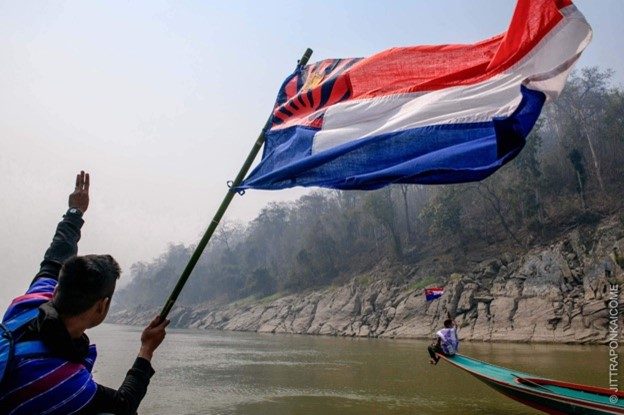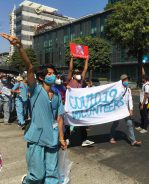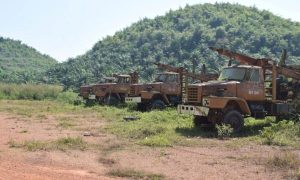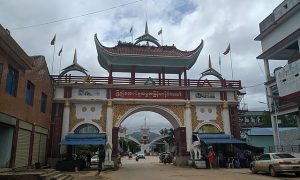At COP-26, Indigenous representatives from across the world went to Glasgow to raise their voices, and try to influence the decisions that would shape the future of our planet. Despite their clear calls for a future in which fossil fuels are left in the ground, local ownership of land and forests is respected, and natural resources are used for need rather than endless profiteering—their vision was not delivered. Instead over 500 fossil fuel lobbyists joined the conference, advocating for a world in which fossil fuels continue to be taken from the earth and emissions released into the atmosphere.
The Glasgow COP-26 showed clearly that national governments, often courted by fossil fuel tycoons, do not hold the solutions to our planet’s hurtling demise. Almost unanimously labelled a failure, the COP-26 failed to address the root causes of the breakdown of life support systems. Rather than curbing the corporate greed of industrialised super-powers and polluting corporations, COP leaders only attempted to offset exorbitant emissions with the remaining lands and forests in the global south—this is nothing short of green colonial rule. Large polluting nations across the globe are failing to meet the goals that were laid out during past climate conferences, even though those targets are not nearly enough to stop fast rising temperatures.
Across Myanmar, indigenous communities and administrations have long managed vast stretches of forest and biodiversity. Some of these areas stand as the largest intact forests in Southeast Asia, protected through efforts and knowledge systems of local and indigenous communities. Following the start of Myanmar’s Spring Revolution after the 1 February military coup, the country has united for change. Beyond the removal of the military and the creation of a federal democracy, a green revolution that returns lands and forests to local communities, puts an end to theft and plunder of natural resources, and provides for the needs of the many rather than the enrichment of the few, must be won.
Myanmar’s Vulnerability to Climate Collapse
Myanmar is at high risk from the prospect of climate collapse. Ranked the 3rd most climate vulnerable country on the planet, over the past 30 years Myanmar has suffered 43 extreme weather events. Combined with authoritarian military rule, these have been catastrophic – in 2007 alone over 138,000 people were killed by the Cyclone Nargis. There are vast numbers of climate refugees who have been displaced across the country’s lands. While those in the Dry Zone endure long droughts, coastal surges in the Delta mean that soil is salinised and unfertile. Finally rising sea levels are due to submerge large swathes of Yangon and coastal regions in the coming decades, potentially displacing hundreds of thousands and destroying expanses of land and properties.
Despite this high exposure to climate change, Myanmar’s response has also been a failure. Over the past ten years policies of liberalisation have resulted in rapid agribusiness expansion, logging, mining, industrial zone development and more. Discriminatory land laws such as the VFV Land Law made small-scale farmers and indigenous peoples criminals on their own lands, while opening up their territories to large scale extractive projects that saw forests plundered and biodiversity destroyed. Further, new legal reforms including the 2018 Forest Law and 2016 Investment Law showed that the Myanmar Government was more interested in profits than people.
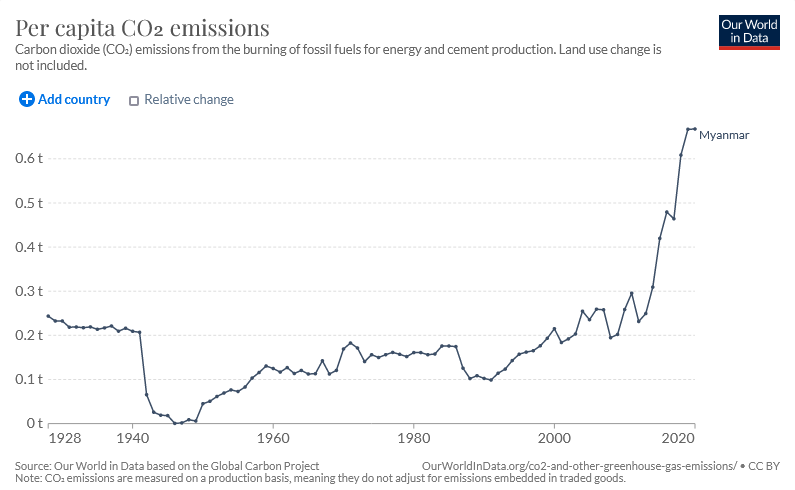
Figure 2: Source: https://ourworldindata.org/co2/country/myanmar
During this period tens of thousands of people lost their lands, as they were handed out to private companies. Deforestation surged, and between 2010 and 2020 7.3% of tree cover was lost as logging, agribusiness, and infrastructure projects expanded. CO2 emissions also soared by over 300% as fossil fuels were unearthed and industrial zones developed. While per capita CO2 emissions remained far below other countries in the region, Myanmar had embarked on the same unsustainable development path that had caused environmental destruction across the region.

Figure 3: Source: https://www.globalforestwatch.org/dashboards/country/MMR/
Myanmar’s National Determined Contributions submitted to the UNFCCC in the Paris Accords, a set of policies that aimed to address the climate crisis, included the expansion of the permanent forest estate (PFE) to 40% of landcover and the expansion of hydropower as a primary energy source. The Permanent Forest Estate is primarily used for logging and plantation expansion rather than conservation, and in some cases large scale dams produce more methane than coal fired power plants. Far from addressing the drivers of climate change, these policies will perpetuate them – leading to more dispossession and more deforestation.
Decades of military control and quasi-civilian rule delivered little for the environment. International mechanisms such as REDD+ and other carbon credit schemes were put at the centre stage of climate responses, however only sought to expand forest enclosures and transform forests into carbon profits to be purchased by polluting nations and corporations in the global north. Efforts to upscale Community Forestry also sought to convert indigenous territories into 30-year leases that incentivised small business solutions and local profiteering—altering the ways in which communities interact with their forests. Rather than supporting the protection of forests and life support systems, these mechanisms have only sought to incentivise further profiteering off indigenous resources, seeing value of forests only in terms of how much money can be generated. Policies that do not radically change our relationship with nature and land, and the communities that depend on them, will ultimately fail.
Answers To Climate Crisis Are Held By Indigenous Peoples
As is the case across the globe, the vast majority of forest and biodiversity in Myanmar are located within the territories of indigenous peoples. Over past decades, indigenous peoples have raised their voices for change, calling for return of territories, for respect for the environment, and for recognition of self-determination. Despite these continued struggles, they have continued to be targeted by military offensives, suffer political and economic marginalization, and have had lands and resources stolen.
While indigenous rights and voices are not listened to, indigenous peoples have been on the forefront of the fight against climate change. Indigenous communities throughout Myanmar have protected large tracts of forest through local knowledge and practices, creating local institutions, rules and regulations for resource use and ensuring that surrounding environment is respected and sustained for future generations. Examples from the Salween Peace Park in northern Karen State, to the forests of Tanintharyi Region, from the Naga Hills to the mountains of Shan State have shown the effectiveness of local systems and efforts of local communities in sustaining their forests and biodiversity.
The Centrality of the Civil Disobedience Movement in Myanmar’s Post-Coup Era
Humanitarian work without the recognition of the CDM will provoke public distrust and rejection.
As well as sustaining lands and forests in line with local livelihoods and practices, indigenous and local communities in Myanmar have also been on the forefront of the fight against large fossil fuel, deforesting and polluting industries. Land and forest dependent communities throughout Myanmar have fought and won against destructive projects in their territories, including coal mines, oil palm plantations, industrial zones and dam projects. Indigenous people are forest protectors and stand on the front line in the fight against the onset of climate change.
Indigenous wisdom and knowledge hold many of the answers to today’s climate collapse. In Karen communities in southern Myanmar, for example, local rules, taboos and value systems mean that natural resources cannot be used for private profit, rather for the use and sustenance of the community. It is also believed by these communities that the health of humans and the environment and entwined and interconnected, and that destruction of the forest will lead to sickness among local communities. Land, rather than understood as a commodity, is viewed as an extension of the people, and forests as the primary provider of medicine, food, and social and cultural relations – stand well protected. Indigenous peoples have proven that they are capable of protecting and sustaining biodiversity in line with healthy communities, and must now be given the space to lead.
Can the Spring Revolution Reverse the Tide on Climate Change?
Over the past 10 years through Myanmar’s so called democratic transition, forest dependent communities and civil society organisations carved out new spaces for climate justice. Communities strengthened control over their territories, created new institutions for sustainable resource management, and fought large-scale development projects that threatened the environment. Despite hard fought battles, few rewards materialised. Land policies further eroded indigenous land rights, forest policies prioritised profits over protection, and relentless extraction of mineral resources abounded. In the midst of the Spring Revolution, new opportunities arise for climate justice.
The current revolutionary movement provides a unique opportunity to escape endless cycles of military oppression, corporate capitalism, and failed international mechanisms. In a new federal democracy, the voices of indigenous and forest dependent peoples must be put at the centre. Local control over lands and forests must be restored to communities who have cared for them for generations, the role of ethnic administrations in resource management must be recognized, and the prioritisation of big polluting industries over the lives of indigenous communities must be ended.
In the midst of failed market-based approaches to mitigating climate change, there is growing evidence that indigenous peoples hold many of the answers. As Myanmar moves towards a new transition, these lessons must be learned.
 Facebook
Facebook  Twitter
Twitter  Soundcloud
Soundcloud  Youtube
Youtube  Rss
Rss 